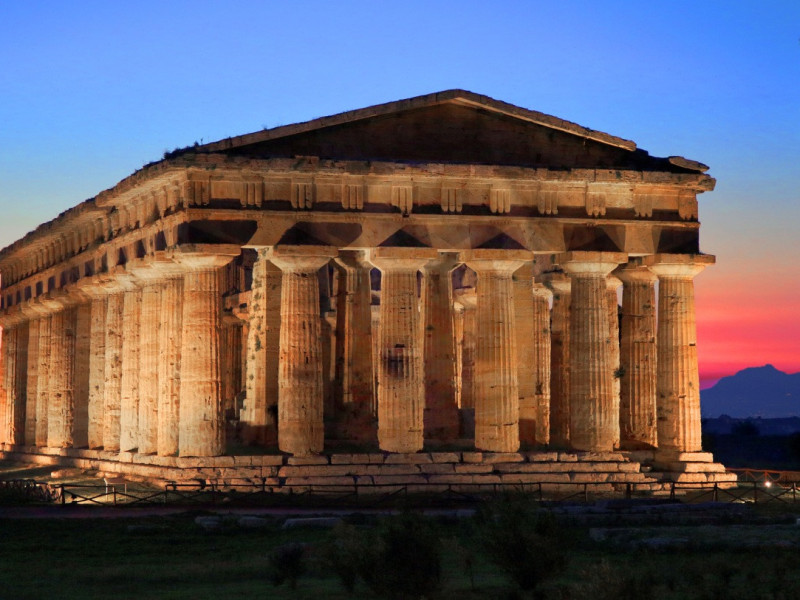Parco Archeologico di Paestum (Sito UNESCO)
The area that can be visited today is only a small sector of the ancient city, whose perimeter (m 4750) is defined by the well preserved circuit of limestone blocks with 28 towers and four main gates: Porta Aurea a North, Porta Sirena to the East, Porta Marina to the West and Porta Giustizia to the South. Famous temples as splendid examples of ancient Greek architecture, are included in a visit that tends to illustrate urban development of the city. The visit can start from the northern sanctuary, whose most important monument is the temple of Athena (so-called temple of Ceres), built at the end of the 6th century. B.C. on artificial rise in the terrain. To the south of the sanctuary it is possible to see two public buildings of Greek age located in the area of the agora: the so-called Heroon, a building destined for the cult of aminent personage, perhaps the founder of Poseidonia heroized after his death; the ekklesiasterion, monument for public assemblies, definitively obliterated in Lucan period. Continuing south, the route allows you to visit some blocks and houses of Roman age; leaving on the left the remains of the amphitheater, partially obliterated by modern SS 18 and passing in front of ublic building with a swimming pool for the cult of Venus, we reach Roman forum (200 x 60 m); the square is surrounded by tabernae and overlooks Comitium, the most important public monument of Latin colony and the so-called Temple of Peace. The itinerary ends with the southern sanctuary dedicated to Hera, dominated by imposing size of two Doric temples: the so-called Basilica (ca 530 BC), with nine columns on the front, and the so-called Temple of Neptune (mid V century BC).



